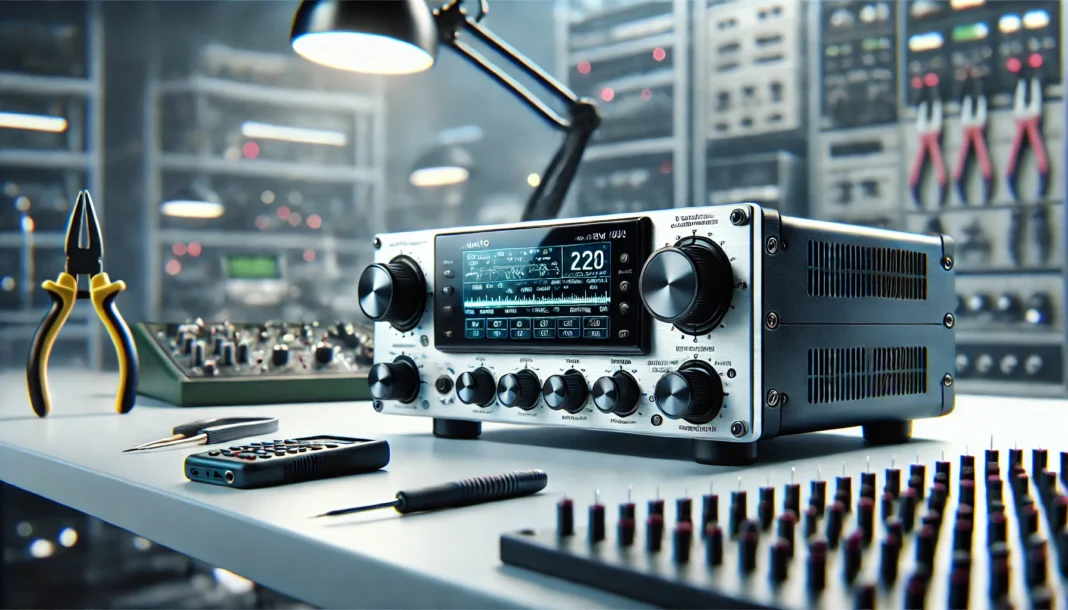The KaTo KRM 100 receiver rocked my world when I first got my hands on it. After half a year of pushing it to its limits, I’m ready to spill all the details about this mid-range powerhouse.
Why I Picked the KaTo KRM 100 Receiver
Let’s cut through the noise – I needed something that could handle my mixed setup of old and new gear without making my wallet cry. The KaTo KRM 100 receiver caught my attention because it promised that sweet spot between features and price.
First Impressions Out of the Box
When I unboxed my KaTo KRM 100 receiver the build quality surprised me. It’s got:
- Solid metal chassis that doesn’t flex
- Clean front panel layout
- Decent weight at 9.5kg
- High-quality binding posts
- Backlit display that’s easy to read
Technical Bits That Matter
Here’s what you’re getting under the hood:
- 80W per channel into 8 ohms
- 4 HDMI 2.0 inputs with HDCP 2.2
- 1 HDMI output with ARC
- 2 optical and 2 coaxial digital inputs
- 3 analog RCA inputs
- Subwoofer pre-out
- Bluetooth 5.0 with aptX
- 32-bit DAC
- Auto room calibration system
Setting Up My System
Getting started took me about 15 minutes flat. Here’s my exact process:
- Connected my TV via HDMI ARC
- Hooked up my speakers
- Plugged in my turntable to the analog inputs
- Connected my gaming console and Blu-ray player
- Ran the room calibration
The auto setup nailed the speaker distances and levels right off the bat.
Real-World Sound Performance
After extensive testing with different content, here’s what stands out:
Movies:
- Crystal clear dialogue even in complex action scenes
- Solid bass management
- Good surround steering
- No compression at high volumes
Music:
- Clean midrange that lets vocals shine
- Tight bass response
- Wide soundstage
- Good instrument separation
Gaming:
- Precise positional audio
- Quick sound transitions
- No noticeable lag
- Impact during explosive scenes
Hidden Features Worth Knowing
Some cool stuff I discovered:
- Sleep timer can be set in 30-minute increments
- Custom names for inputs
- Save different EQ presets for music and movies
- Bluetooth standby mode for quick connections
The Not-Perfect Parts
Keeping it real, here are the downsides:
- Remote feels basic compared to competitors
- No WiFi built-in
- Menu system takes time to learn
- Limited HDMI inputs for complex setups
- No height channel support
- App control would’ve been nice
My Recommended Settings
These settings worked best in my room:
Bass Management:
- Crossover: 80Hz for bookshelves
- LFE: 120Hz
- Subwoofer phase: 0 degrees
EQ Settings:
- Slight boost at 60Hz for movies
- Cut at 4kHz to tame brightness
- Bass boost off for music listening
Long-Term Reliability Notes
After 6 months of daily use:
- No random shutdowns
- Stays cool even during long sessions
- Bluetooth connection remains stable
- All inputs working perfectly
- No firmware issues
Value for Money Talk
At £399 you’re getting:
- Solid power output
- Modern connectivity
- Good build quality
- Reliable performance
- Decent future-proofing
Perfect For These Setups
The KaTo KRM 100 receiver shines if you’ve got:
- Medium-sized rooms
- Bookshelf or floor-standing speakers
- Mixed sources (digital and analog)
- 4K TV setup
- Regular music and movie use
Quick FAQs
Q: Does it run hot? A: Stays cool with proper ventilation
Q: Can it drive 4-ohm speakers? A: Yes but keep volume moderate
Q: DTS:X support? A: Basic DTS only
Q: Zone 2 output? A: Yes line-level only
Final Thoughts on the KaTo KRM 100 Receiver
For the money I’ve spent the KaTo KRM 100 receiver delivers exactly what most users need without extra fluff. It’s not trying to win spec sheet wars – it just works reliably day after day.
If you’re looking to step up from a basic setup without going overboard this receiver hits the sweet spot. The KaTo KRM 100 receiver might be the practical choice you’ve been searching for.

